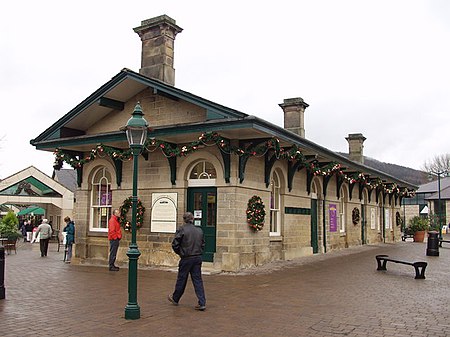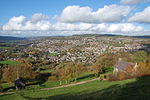Rowsley railway station
1866 establishments in EnglandBeeching closures in EnglandDisused railway stations in DerbyshireFormer Midland Railway stationsPages with no open date in Infobox station ... and 5 more
Railway stations in Great Britain closed in 1862Railway stations in Great Britain closed in 1967Railway stations in Great Britain opened in 1849Railway stations in Great Britain opened in 1862Use British English from March 2015

The original Rowsley railway station was opened in 1849 by the Manchester, Buxton, Matlock and Midlands Junction Railway to serve the village of Rowsley in Derbyshire.
Excerpt from the Wikipedia article Rowsley railway station (License: CC BY-SA 3.0, Authors, Images).Rowsley railway station
Dale Road North, Derbyshire Dales
Geographical coordinates (GPS) Address Website Nearby Places Show on map
Geographical coordinates (GPS)
| Latitude | Longitude |
|---|---|
| N 53.19 ° | E -1.614 ° |
Address
Peak Village
Dale Road North
DE4 2EJ Derbyshire Dales
England, United Kingdom
Open on Google Maps








